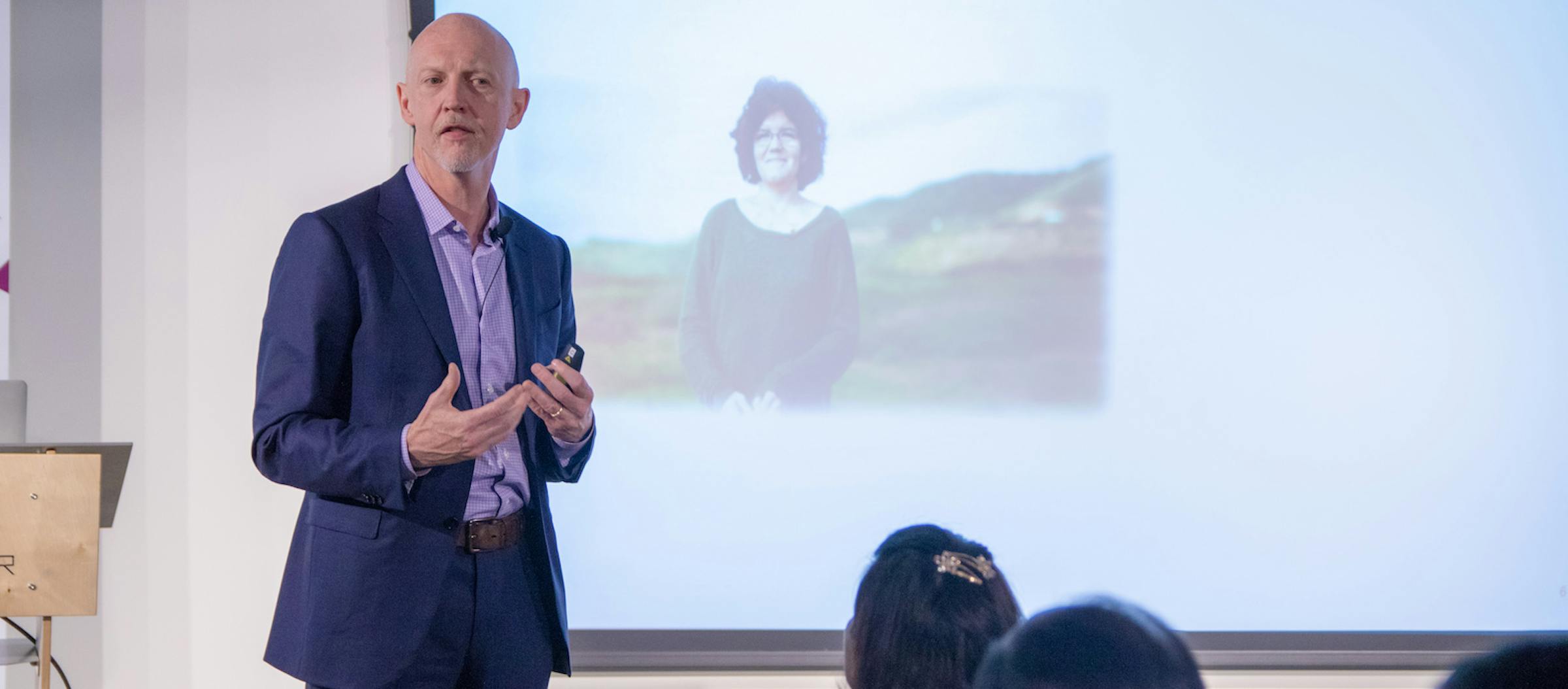Sangamo Therapeutics CEO Sandy Macrae on pioneering genetic cures
Last November, Sangamo Therapeutics made medical history by treating the first patient with an in vivo genome-editing therapeutic delivered intravenously to “edit” cells within the patient’s body. In a recent talk at MATTER, Sangamo CEO Sandy Macrae discussed how the company’s zinc finger technology for gene editing will fundamentally change how we care for patients and treat disease. Watch the full event here.
Below are a few of our favorite moments from Sandy’s talk.
Your company’s name, culture and beliefs matter.
“We changed our name from Sangamo Biosciences to Sangamo Therapeutics to send the message internally and externally that we cared about medicines and we wanted to move through to patients. For those of you who are starting up companies, naming is really important and also establishing a culture that everyone can hold onto and a belief system that they can hold onto is almost more important than what you’re doing. You have to bring the company together.”
To partner or not to partner — that is the question.
“For a company of this size to have seven different things coming in the next 18 months is an enormous responsibility and will be defining for gene editing moving forward. We can’t do it ourselves; we do it in partnership with large pharma companies. I believe pharma companies are one of the best places to make medicines when the medicine is complicated or competitive. We’ve chosen very carefully to partner with the best in the field when it comes to certain diseases.
As CEO, one of the important decisions I have to decide is what do we keep for ourselves and when do we partner with other people. It sounds like a minor decision but the value of the company seems to predicated on giving people the sense that you have a pipeline of your own and you’ll take it to commercialization because that gives investors something to believe in. Whereas with partnerships, they feel you’ve given away part of your technology.
Our challenge is there are 20,000 genes so we cannot do all of them. If people come to us with a good proposal for an important gene and an important medical condition, we’ll find a way to partner with them. But we to take things forward ourself and that balance is an interesting one within the company because as soon as you take something forward yourself, you have to invest all of your resources to make those successful.”
Does editing our genes change who we are?
“There’s the question we’ve only begun to think about: If you treat a person with hemophilia and you edit his genes, does he no longer have hemophilia? Is he an ex-hemophiliac? Is he a hemophiliac with a gene edited? How do you describe him? What are his rights? What are his insurance premiums now that you’ve changed his DNA? These questions need to be answered so as we can all come together and properly use gene editing in society.”
Ask the patient what they want.
“It’s so easy to stand here and have an opinion on whether or not [gene editing] is the right thing to do. But we so seldom ask the patient: What do you want? How do you feel about your disease? Consent and support of the patient community is vital.”
CRISPR versus zinc finger technology.
“We look at CRISPR like the boy band and we are the Rolling Stones. The boy bands have the froth and excitement about them… We need to tell a story [about our zinc finger technology] based on data. When we show the first clinical results, I think that will persuade everyone that what we have is really remarkable.”
The science is changing. Business models will necessarily follow.
“The gene-editing model is different [than the pharmaceutical business today]. If it succeeds, once a patient is treated, they’re treated. The value of that to society is enormous. The payers will need to think about how they’ll reimburse this kind of treatment. You’ll first treat the incident population — all of the patients with the disease — and then you’ll move to treating the prevalent population — the new patients who are born and created. The business model for that is different.
We don’t talk about pricing. We talk about value. It’s not about money. It’s about the difference you can make in a patient’s life.”
Sign up for the MATTER mailing list to stay up to date on healthcare innovation news and events.



